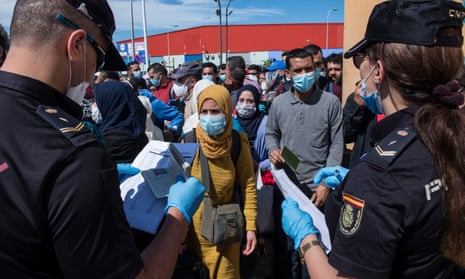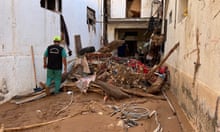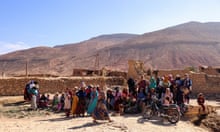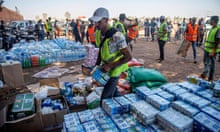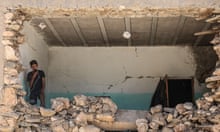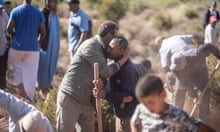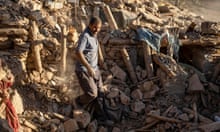On 14 March, Spain’s prime minister, Pedro Sánchez, ordered the country into Covid-19 lockdown, saying “extraordinary decisions” needed to be taken as the country struggled with a “health, social and economic crisis”.
The Moroccan authorities had taken their own extraordinary decision the day before, when they ordered the shutdown of the border crossings that connect the Spanish enclaves of Ceuta and Melilla with the rest of the country. With the only land borders between Africa and Europe closed, many citizens from both continents found themselves trapped.
Three months on, more than 500 Moroccans remain in limbo, far from home and with few – if any – resources with which to support themselves. Many sleep each night at the gates of the border and few maintain the safety distances mentioned in Covid-19 protocols.
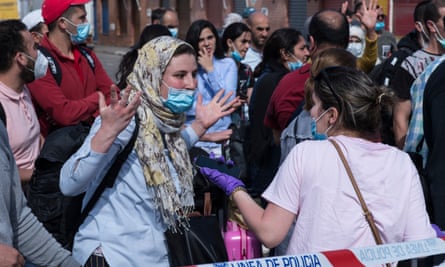
Some, such as Haya, a young university student who was returning from Madrid to the Moroccan city of Nador, was lucky enough to have relatives or acquaintances to shelter and protect her in Melilla.
Others like Omar, who was trying to return to the north-western Spanish region of Galicia – where he works to support his family in Morocco – have spent months sleeping in a warehouse without running water or electricity.
And then there are the even less fortunate: Hakim, another stranded Moroccan, has been living in a wood-and-cardboard shack on the outskirts of the city, while others have been sleeping out in the open.
Many of those trapped at the border were taken in by the city authorities, which provided tents and accommodated people in venues including Melilla’s bullring. Some women and children, meanwhile, have been sleeping in the offices of the city’s Muslim cemetery, and in trucks parked next to graves.
In spite of the help and good intentions, however, the lockdown in force under Spain’s continuing state of emergency has resulted in many people being cooped up in overcrowded camps for more than two months.
“It’s very hard being away from home, without being able to move from a closed area,” said Moha, who is navigating the limbo with his wife, baby, and several heavy suitcases.
“We were watched continuously and crowded in poor conditions. We felt like prisoners.”

When – following more than two months of closures – Morocco decided to open the Beni Enzar border crossing to allow their nationals to return, all the Moroccans who were in Melilla ran to the border to cross back over.
There was, however, a catch: the Moroccan and Spanish authorities had compiled lists of those who would be allowed to return home, and the former’s contained only 200 names.
“The Moroccan authorities have provided us with a list of 200 people,” said Sabrina Moh, the Spanish government’s representative in Melilla.
She added: “Perhaps Morocco doesn’t know how many of its people are trapped in Melilla.”
The Moroccan list mentioned 130 “priority” citizens, including businessmen, wealthy people – and even the mayor of Nador, one of Morocco’s largest cities.
Spain, meanwhile, provided a list of around 70 people who are facing deportation from its territories. Naturally, they did not show up to be sent back across the border.
The following day, queues of people who wanted to return home began to form again, but only 50 people from vulnerable groups were allowed back.
Many of those left behind continue to sleep near the border in the hope that their luck will change at sunrise and that they will be able to pass through the metal fence that separates a small European city from their homeland.
Some are facing greater threats than the coronavirus, destitution or homesickness.
A 34-year-old Moroccan woman was found dead in the bullring toilets, while a girl sheltering in the Muslim cemetery was sexually assaulted.
“We are living as war refugees in a pandemic,” said Abdelsamar, one of the Moroccans who remains tantalisingly close to home.
“It is an experience that I would not wish on anyone.”
